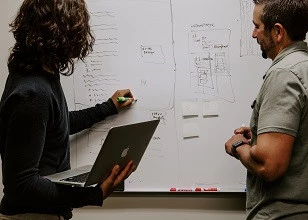Why automation is a dead end without optimization and control
Learn how to apply automation technologies with control over the outcomes to ensure a successful and optimized initiative
Add bookmark
Digitalization is at the top of many companies’ agendas and is often interpreted as the automation of business processes. This narrow focus on automation likely misses the mark with regard to what is needed to make digitalization a success.
Companies are investing a great deal of effort in driving digitalization forward. According to an IDC report published in November 2021, global spending on digital transformation is forecast to reach US$2.8tn in 2025, more than double the amount allocated in 2020.
Marc Andreessen, an American entrepreneur credited with co-authoring the first widely used web browser, made a famous prediction in 2011 regarding the possibility for software to transform the world, "software is eating the world", has been proven to be accurate. Companies are pursuing a variety of goals with their digital strategy, including new revenue opportunities, improved customer experience, efficiency and productivity, cost reduction, business resilience and quality improvement.
Digitalization is very often understood as the automation of processes and the market for automation technologies is growing at high, double-digit rates. Process automation is represented by a variety of different technologies, such as low-code and no-code platforms, workflow systems, intelligent document processing (IDP), robotic process automation (RPA), integration platforms and chatbots. Artificial intelligence (AI) has an increasing share in all of these process excellence tools and the total set of these technologies is also referred to as 'hyperautomation' or 'automation fabric'.
The market is growing strong, especially because the technologies have become so user-friendly that business departments, not just IT organizations, can now initiate and drive many of the automation projects. The role of the citizen developer, who is able to build applications for the requirements of his or her team without deep IT knowledge, has become widespread.
The risks of the citizen developer approach
The risks of this approach include the potential for citizen developers to attempt automation for suboptimal processes and selectively automate individual activities through specialized apps, without knowing the overall context, which leads to islands of automation and runs counter to the idea of end-to-end processes.
Processes extend beyond company boundaries and without understanding the cooperation with suppliers and distributors, there is a risk of process breaks and suboptimal management of supply chains. Aside from this, regulatory necessities increasingly determine the requirements for process execution and must be considered while the decentralized development of apps can very quickly lead to a tangle of technologies, resulting in high follow-up costs.
Without understanding the overall objectives, performance and compliance requirements, process automation is like a Formula 1 car without a steering wheel. A clear alignment on the process goals and the integration into an optimization cycle are crucial for success. The following ten-step approach takes these aspects into account:
Describe your business model
This should be done in such a way that it defines the positioning in the market and the goals associated with the core processes. For example, it is important to consider which processes focus on efficiency and cost control and which processes are crucial for differentiation from competitors. Organizations should also clarify what differentiation in the process means in concrete terms, whether that is high delivery reliability, high product quality or fast throughput times.
List the core processes at a high level of aggregation
Use a repository to list core processes and describe the associated goals and the regulations to be followed for these processes.
Document your partner network and the processes beyond the company boundaries
Many regulatory requirements, to respect human rights and environment,, do not stop at the company's borders but extend to the entire global value chain.
Specify the performance and compliance requirements
Specify process requirements through concrete targets and metrics and compliance requirements through corresponding controls in the processes.
Use the process descriptions and specifications as blueprints
These will serve as a mandatory basis for all automation and development projects.
Introduce a central portfolio management system
This will help to keep track of the automated processes and will become part of the corporate repository.
Establish a monitoring system
Do this for the important processes through the use of process mining and task mining technologies, to continuously monitor the performance targets and initiate countermeasures in case of any identified issues.
Identify and counteract deviations
These deviations from compliance requirements can be identified through use of the aforementioned monitoring system.
Give all relevant business departments access to the repository content and the process analyses
The process owners are responsible for the adjustments to the processes and applications.
Consider document automation as a living system
Think of the components for documentation, automation and monitoring as a living system, recognize the relevant patterns in real process execution and adapt the requirements continuously to customer demands and changing market situations.
This approach aims to avoid islands of automation. Instead, an enterprise repository is used to coordinate automation projects to ensure that they all contribute to the common enterprise goals.
It also provides an answer to the frequently asked question of whether to start with modeling, automation or mining. The different approaches and techniques complement each other and the real value comes from an integrative approach. Process excellence is eating the world.




















































